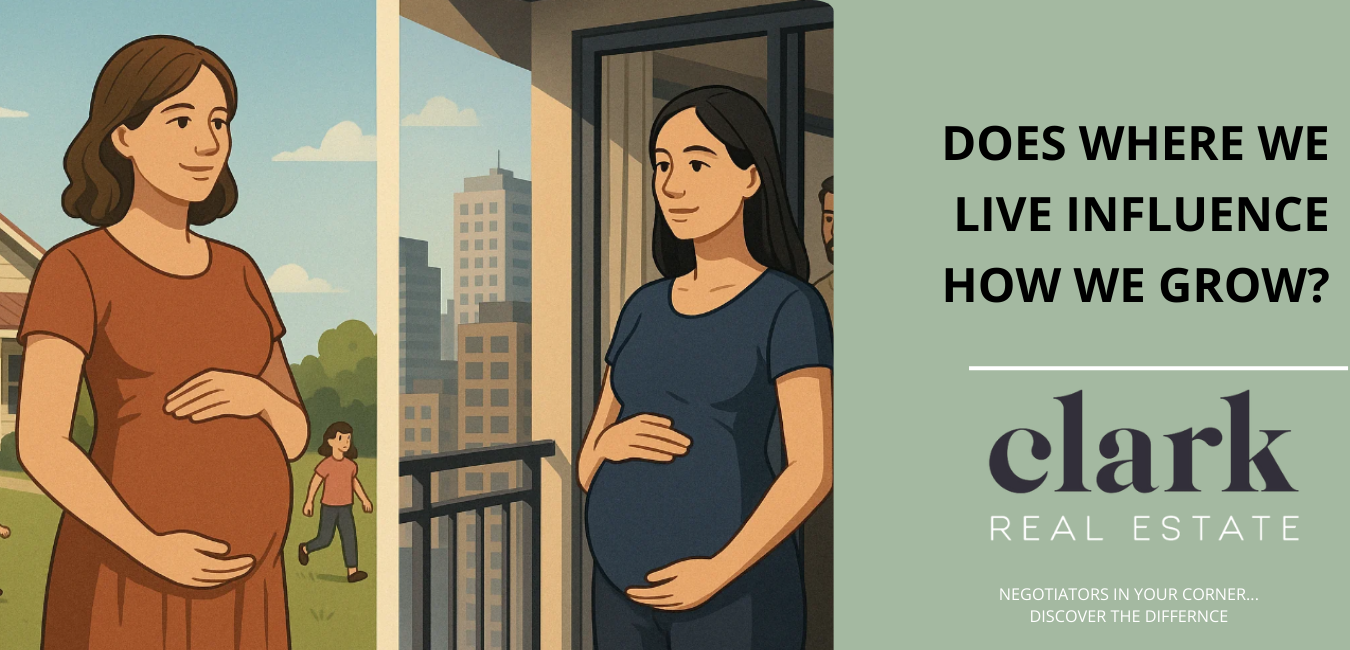
Australia’s birth rate has reached a record low, with the Total Fertility Rate (TFR) falling to just 1.5 babies per woman in 2023. This is the lowest recorded figure in the country’s history and well below the replacement level of 2.1. While a wide range of factors can influence a country’s fertility rate—social, economic, cultural, and personal—there is increasing interest in how housing patterns may be playing a more significant role than previously thought.
One of the more intriguing patterns emerging from the data is the connection between housing type and birth rates. Areas with a higher proportion of apartment dwellings tend to show significantly lower fertility rates. By contrast, outer suburban areas and regional communities—where detached homes with yards are more common—tend to have higher fertility rates, often closer to replacement levels. This raises a key question: how much does the type of home we live in influence when or whether people choose to start families?
It’s easy to see why housing could have such an impact. Apartments in dense urban centres may be more affordable than houses in terms of purchase price, but often offer far less space. Many young couples living in cities are faced with a decision: stay close to work and lifestyle amenities in a compact apartment, or move further out for more space and the opportunity to grow a family. For those already managing high living costs, the prospect of upsizing to a family-friendly home can feel out of reach.
Housing affordability also continues to be a major concern. In Australia’s major cities, the cost of buying or renting a larger home in a family-friendly suburb has increased significantly in recent years. This financial pressure can lead to couples delaying having children or choosing to have fewer. In some cases, the dream of owning a home big enough for a growing family simply doesn’t align with their financial reality.
Interestingly, this is not just an Australian phenomenon. Globally, countries with high-density, apartment-heavy urban landscapes tend to experience lower fertility rates. Think of places like South Korea, Japan, and parts of Europe—regions where space is at a premium, urban living dominates, and population growth is stagnating or declining. Conversely, countries with more suburban-style development tend to see higher fertility rates, even when other economic conditions are similar.
This suggests that the built environment—the way we design and structure our cities and housing—can shape major life decisions in very real ways. Urban planning, housing policy, and affordability don’t just affect where we live; they may directly impact if and when people choose to have children.
Australia’s fertility rate has been below the replacement level since 1976, and while migration has helped maintain population growth, it’s clear that more needs to be considered in long-term planning. Supporting families isn’t just about providing quality childcare or parental leave—it’s also about making sure families have somewhere suitable, affordable, and comfortable to live.
At Clark Real Estate, we believe homes are more than just bricks and mortar. They represent opportunity, stability, and the foundation for future generations. As conversations continue around housing policy and demographic trends, it’s important to remember the deep connection between where we live—and how we grow.

